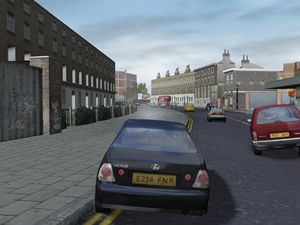The One That Got Away
Mark Hammond had turned away from his former life of crime. But the underworld
hasn’t forgotten him, and now Hammond is up against the wall with nowhere to turn.
They’ve killed his wife. They’ve got his boy. And now, he’s their dog.
The mysterious “they” is the notorious Bethnal Green Mob, headed by Charlie
Jolson. By holding Hammond’s…
-
Great story and voice acting
-
Good driving sequences
-
Shooting for the stars
-
But falling short
-
Stilted gunning sequences
-
Gameplay and control problems
-
No maps or camera controls









